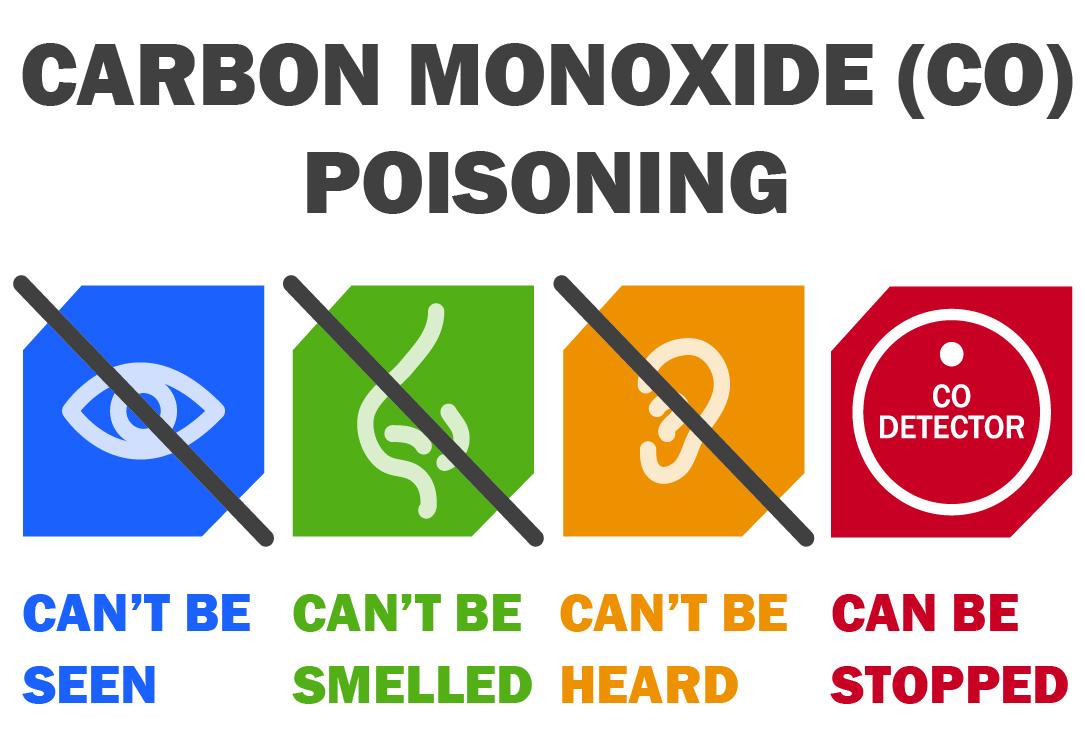
On a summer vacation to Ireland last year, my wife, daughter, and I were staying in a rented apartment above a restaurant and bar. After going out for dinner and a beer one night, we came back to the apartment and went to sleep around 10 P.M. We were staying on the second floor of a 200-year-old building on a main street in town. As it was summer, we had our windows open until about midnight when the bars on the street below started loudly emptying its patrons.
Around 2 A.M., I went to the bathroom. I passed out and face planted. The sound of the loud "BAM!" woke my wife. She got up to check out the situation and got lightheaded. After making her way to the bathroom door, she found she couldn’t open it; I was unconscious on the floor, blocking it.
I regained consciousness and crawled back to the bed. Initially, I thought I had been drugged or had food poisoning. A short time later, my wife went to the bathroom where she also collapsed. That's when I began to suspect carbon monoxide, or CO.
I yelled to my daughter to stay where she was, open the window and keep her head in the outside air. As I was trying to move my wife out of the bathroom, I passed out again. Face plant #2! My daughter later said I had a seizure. I regained consciousness, got out of the bathroom and my wife followed later. This all elapsed over 45 minutes.
Back at home a few days later, I started suffering from memory lapses, a lack of focus, sensitivity to light and loud noise, and random irritability. These were primarily attributable to the two face plants in the bathroom and the resulting concussion – triggered by losing consciousness. Six months later, I’m still feeling some of these effects.
From my years of experience in the home building and remodeling industry, I believe the source of the carbon monoxide came from equipment in the restaurant directly below the apartment’s bathroom. I suspect that closing all the windows in our unit allowed the odorless gas to pool in the bathroom and spread into the sleeping room.
To avoid having what happened to my family and me, please take these steps to protect yourself and your family from carbon monoxide poisoning.
I did not do some of the following tips below and am paying for it now literally and physically. Make sure to get medical help, but also file a police report, which you will need if you must take legal action. Having a travel CO detector may seem excessive for a vacation. But, had I not awoken to use the restroom, my wife, daughter, and I could have all died in our sleep.
- Before you travel, buy a travel-size carbon monoxide detector; buy them for your loved ones, too.
- Buy international cell service and check that it's working.
- If you experience any of the symptoms described above (and further described below), get out of the unit immediately.
- Call emergency services immediately - CO stays in your blood for 36 hours*. Request the police as well.
- File a police report.
At home, do the same steps above plus install hard-wired smoke and CO detectors with a battery backup.
If you have experienced carbon monoxide poisoning, please consider completing Dr. Donnay’s anonymous poll to help his research team better understand CO poisoning frequency, treatment, and detection.
About carbon monoxide
Carbon monoxide is a colorless, odorless, tasteless toxic gas that interferes with the blood's capacity to carry oxygen. Sources of carbon monoxide in your home include, but are not limited to: gas appliances, fireplaces, furnaces, hot water heaters, stoves, generators, and vehicles.
People with carbon monoxide poisoning often overlook the symptoms, which can include headache, nausea, dizziness, or confusion. Undetected exposure can be fatal.
Between 2010–2015, 2,244 deaths resulted from unintentional carbon monoxide poisoning. The highest numbers of deaths each year occurred in winter months. In 2015, a total of 393 deaths resulted from unintentional carbon monoxide poisoning occurred, with 36% of the deaths occurring in December.
More information here on carbon monoxide from the Centers for Disease Control (CDC).
*After 36 hours, what has diffused through your blood and skin into your tissues may still be present in muscles and various organs at higher than normal levels compared to blood according to Albert Donnay, MS, MHS, an independent toxicologist.

Follow us